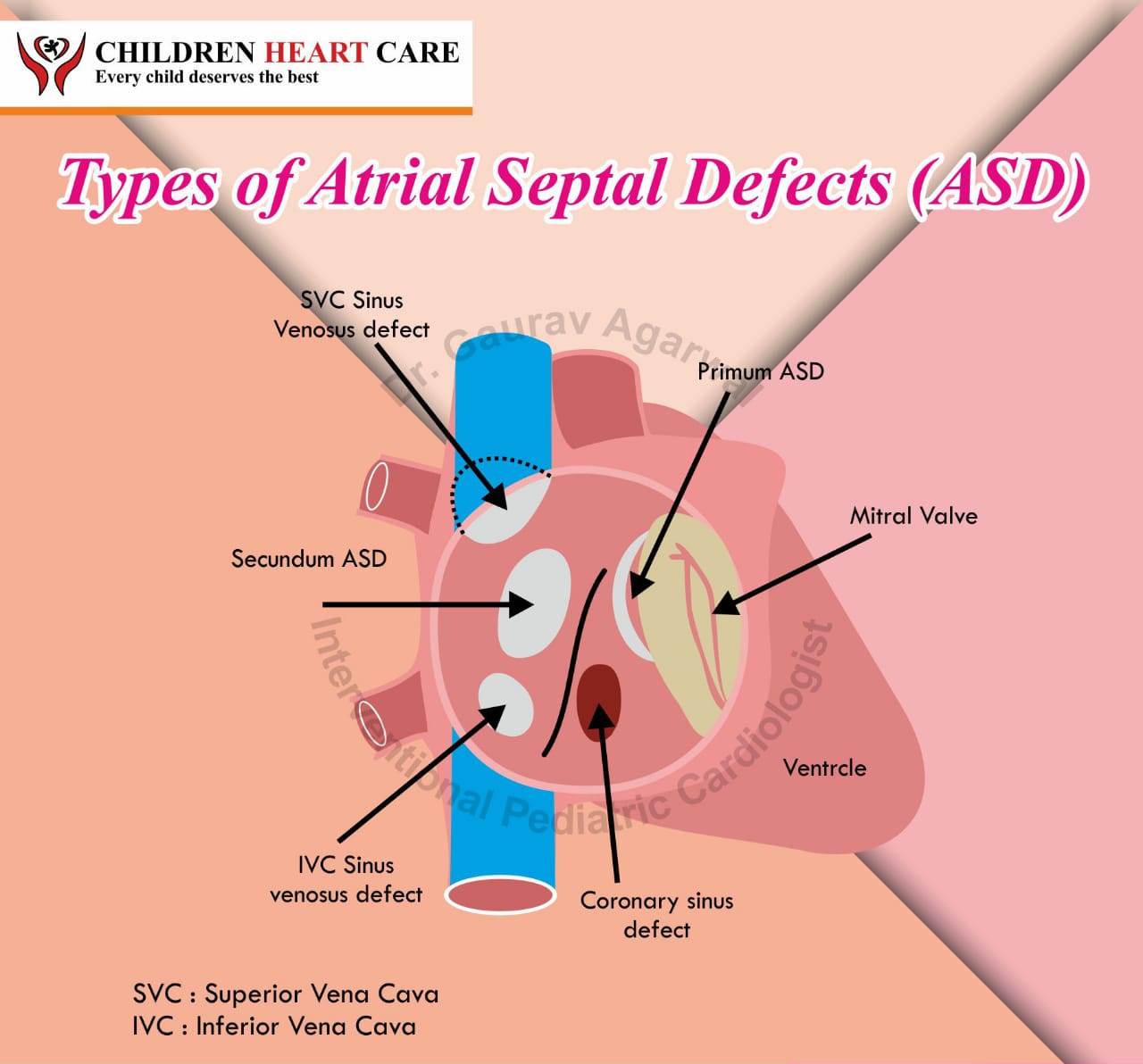Atrial septal defect is a congenital heart defect (CHD). This is in the form of a hole between two upper chambers of the heart known as atrias.
Types of Atrial Septal Defects (ASD)
Ostium secundum atrial septal defect (OS-ASD) is the most common type of ASD.
Other types of ASDs are Ostium primum defect, coronary sinus defect, sinus venosus type of defect (SVC & IVC types) in atrial septum.
Presentation of Atrial Septal Defect (ASD)
Majority of children are asymptomatic. As majority is asymptomatic, ASD can be easily missed in early childhood and even in adulthood. On careful examining the child, we can hear abnormal heart sound (murmur) in left upper chest area.
In adults, symptoms generally starts at around 25-30 years of age in the form of breathing difficulty, easy tiredness, heart beat irregularity etc.
Diagnosis of Atrial Septal Defect (ASD)
ASD can be suspected clinically by hearing murmur sound.
Diagnostic modalities for assessing ASDs are ECG, chest X-ray but confirmatory test is by doing echocardiography (ECHO) from chest of the child.
ECHO is a non-invasive test and it is not painful to the child. This test generally takes 5-10 minutes for completion.
In older children, sometimes another modality of ECHO is required named as transesophageal echocardiography (TEE) that needs to be done by putting an echo probe through the food pipe.
Rarely, CT or MRI scans are required for diagnosis.

Dr Gaurav Agrawal is a Pediatric Cardiologist (Child and Fetal heart Specialist). Dr Agrawal is a pediatrician who has specialized training in the treatment of various child heart related problems (neonates to 18 years of age). He is also having a vast experience in fetal echocardiography.
He is one of the very few pediatricians in India who practices pediatric cardiology exclusively. Cardiac problems in children are common in children, sometimes life threating and often not diagnosed properly. Early diagnosis and timely treatment is very important. Areas of specific interest include child echocardiography including fetal echocardiography, diagnostic and therapeutic cardiac catheterization (pediatric cardiac holes closure by device, opening of obstructed cardiac valves by balloons etc).




